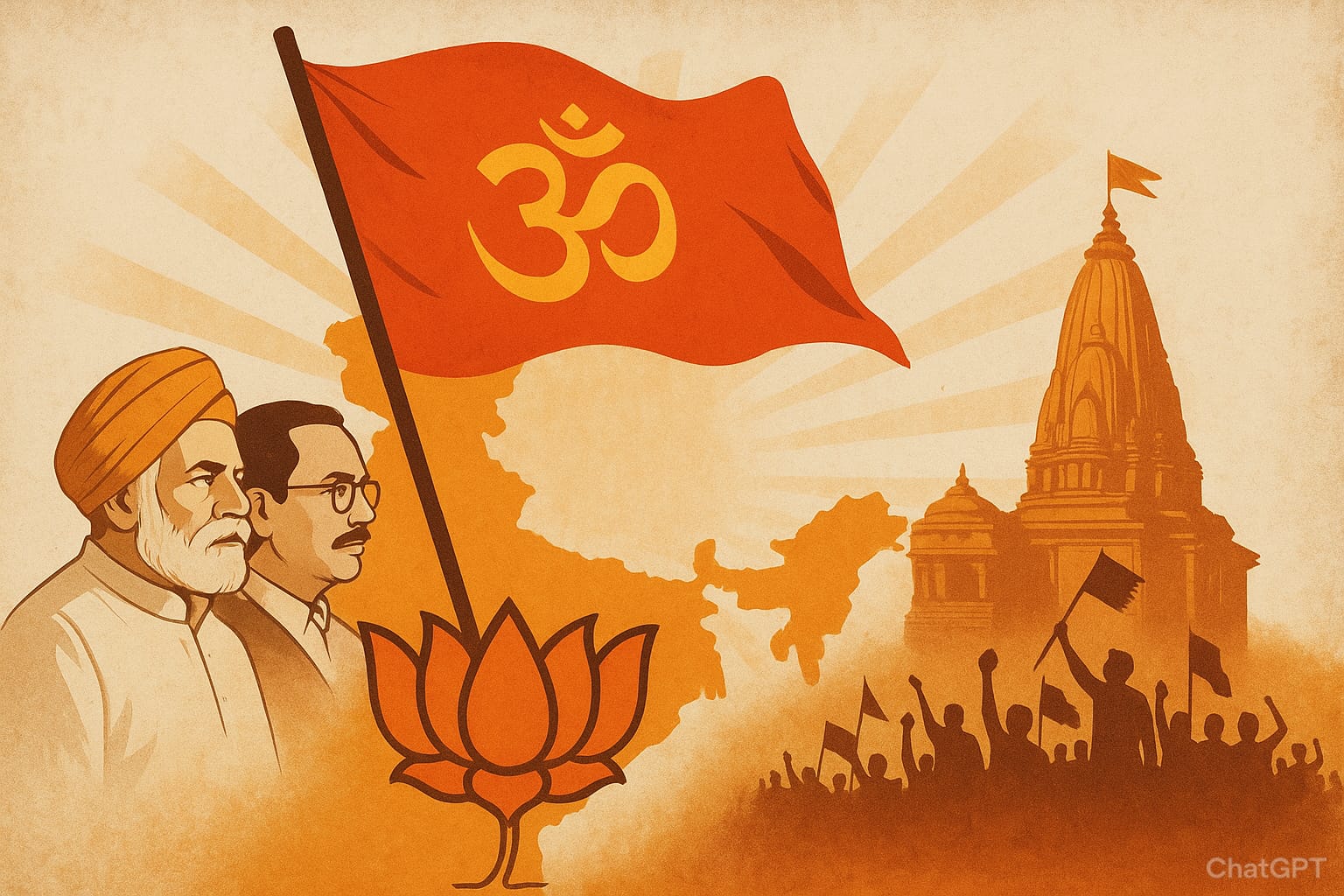The Historical Trajectory of Hindutva Politics in India
Sohaib Ahmad August 16, 2025 0
The Historical Trajectory of Hindutva in India by Global Stratagem Insight
Contemporary India is undergoing a radical restructuring of its society and polity. The ruling BJP, which has been in power since 2014 is the principal agent of this change. Its policies are driven by the ideology of Hindutva to which it has longstanding adherence. Therefore, it is imperative to develop an understanding of the inception and evolution of Hindutva for making a better sense of the changing social and political landscape of India. This inquiry is intended to navigate the historical trajectory of Hindutva over time.
Hindutva, or Hinduness, both as a term and concept, is usually attributed to the twentieth century ideologue VD Savarkar who is also often credited with coining the term. However, this claim is highly contested, and research suggests the usage of the term prior to Savarkar. Notwithstanding, it was Savarkar who ascribed the popular meaning to the term. In his seminal work, Essentials of Hindutva published in 1923 from Nagpur, he outlined his vision of Bharat (India) as a “Hindu Rashtra” (Hindu Nation). Savarkar defined a Hindu as “one for whom India is both Fatherland and Holyland”. This distinguishes Hindus from non-Hindus for whom India is the former but not the latter.
Drawing upon this, he contended that religions that are native to India like Jainism, Buddhism and Sikhism are also variants of Hinduism. Following this line of argument, he suggested that Muslims and Christians do not fall into this category since their Holyland is located in the Middle East, thus their loyalty is divided and cannot be a true part of the Hindu nation. Savarkar, being a self-described atheist, did not define Hindu merely in terms of religion rather in the broader context of Indian culture and history.
Scholar and Indologist Christopher Jafferlot believes Arya Samaj (a Hindu revivalist movement) to be the antecedent to Hindu nationalism. Arya Samaj was meant to reform Hinduism, but it had exclusionary tendencies as reflected by its initiatives of Shuddhi (conversion of non-Hindus to Hindus) and Sangathan (organizing Hindus militarily). Some of its prominent member including Lala Lajpat Rai and BS Moonje joined the Hindu Mahasabha formed in 1915 by Madan Mohan Malviya as an interest group to safeguard the interests of Hindus which later transformed into a political organization. Savarkar himself joined the Mahasabha in 1937. K. B. Hedgewar, a protégé of BS Moonje, who was deeply influenced by Savarkar, laid down the foundation of the Rashtriya Swayamsevak Sangh (National Volunteer Organization).
The purpose was to build national character and instill discipline among Hindus for the realization of “Hindu Rashtra”. Both the Hindu Mahasabha and the RSS continued working on parallel lines often in periodic collaboration and cooperation with one another until Golwalkar’s ascent to power in RSS. In early 1940s, differences began to surface between the two organizations despite the fact that a bulk of individuals-maintained membership in both.
The year 1951 marked the split between two when some former Mahasabha members established Jan Sangh, drawing support from the RSS. To advance the cause of Hindutva, the RSS members also established the religious organization Vishwa Hindu Parishad and its student military wing Bajrang Dal in the subsequent years. Thus, the RSS is the progenitor of the family of organizations dedicated to the cause of Hindutva collectively called Sangh Parivar.
Jan Sangh was merged into the Janata Party which formed the government in 1977, but the amalgam collapsed due to differences with left-leaning parties, and it reorganized itself as the Bhartiya Janata Party (BJP) in 1980. BJP extended support to the National Front in government formation in 1989, but later withdrew its support over the issue of the Ram Janmabhoomi movement. Atal Bihari Vajpayee was the first prime minister from BJP, serving from 1998 to 2004. Some incidents in his tenure reflects the encroachment of Hindutva project but secular posture of India remained intact partly because of its historical foundations and partly because of Vajpayee’s own persona. However, the landslide victory of the BJP in 2014 and the ascent of hardliner Narendra Modi were followed by the radical saffronisation of India. The process gradually deepened as the party won again in the 2019 and the 2024 elections.
During its more than a decade-long rule, the BJP government under Narendra Modi has taken several constitutional and legal measures to realize their long-held dream of making India a Hindu nation. This includes the adoption of the Citizen Amendment Act (2019), the Repeal of Article 370 pertaining to Jammu and Kashmir (2019), and most recently, the Waqf Amendment Act (2025), to name a few. In international politics, the BJP government is also pursuing a jingoistic foreign policy driven by national pride rooted in the idea of Hindutva.
This culminated in bringing India into conflict with Pakistan twice —in 2019 and 2025 —each of which could have potentially escalated into a full-scale war between the nuclear neighbors. India has long been framed by critics as a bully, purportedly harassing smaller countries of the region. However, the trend has intensified in the past eleven years with small countries, including Bangladesh, Sri Lanka and Nepal, lodging their protests against India’s coercive policies, aimed at achieving its desired outcomes. One may be right to conclude that India is in the phase of transition, redefining and reinterpreting its national identity.



